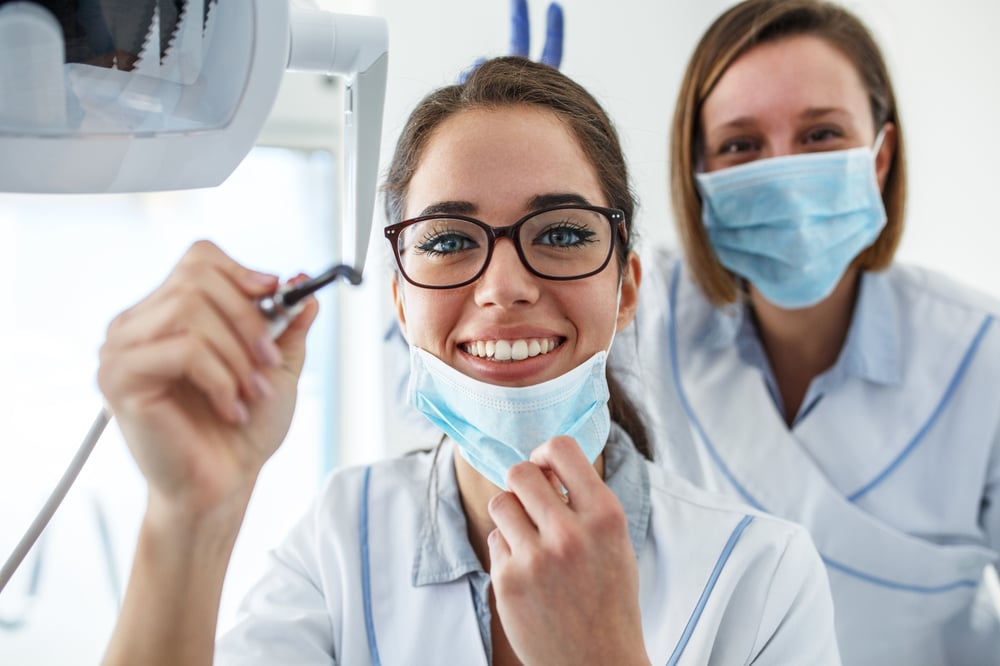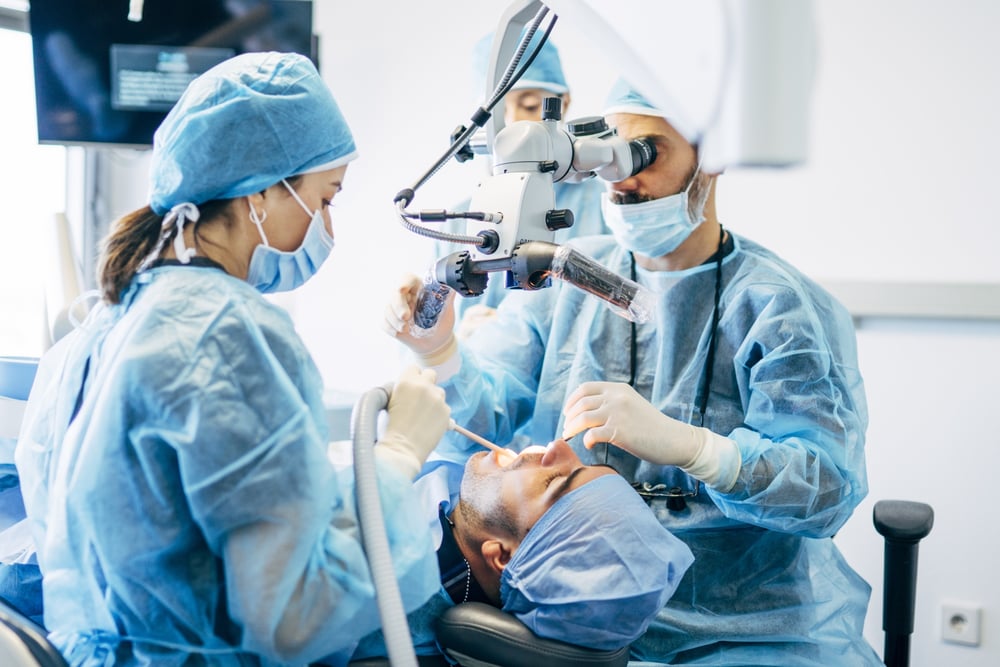Posted by Amy Carbone on Mar 4, 2020 9:00:00 AM
Is your dental practice following OSHA guidelines? If not, you could be at risk. Here's some general information to note about OSHA compliance for dentists.
What Is OSHA?
The Occupational Safety and Health Administration (OSHA) is a branch of the U.S. Department of Labor that exists to establish health and safety regulations for working persons. OSHA provides educational materials, training, and assistance to organizations, as well as imposing penalties for failure to adhere to safety guidelines.
What Does OSHA Mean to the Dental Practice?
Many general health and safety guidelines may apply to a dental practice. Dental associates, hygienists, dental assistants, and administrative staff are exposed to a number of workplace hazards, including environmental, chemical, physical, biological, and psychological threats. Dental practices should not only engage in regular safety training but may also need an executable plan in place in the event of exposure.

Potentially Critical OSHA Regulations for Dentists
The following OSHA regulations may apply to dental practices:
Hazard Communications
OSHA HCS, also called HazCom or the OSHA Hazard Communications Standard, is a law that dictates the assessment and communication of chemical hazards in the workplace. It states that employees have the right to know what chemicals they may be exposed to during the course of their employment, their potential hazards, and what steps they can take to mitigate the risk.
In June 2016, OSHA aligned HazCom to worldwide hazard communications standards outlined in the Globally Harmonized System (GHS). This requires chemicals to now be classified according to the severity of the hazard it poses.
Chemical labels should display six standard elements: pictograms, product identifiers, signal word, manufacturer information, precautionary statements, and hazard statements. Safety Data Sheets (SDSs) should also be updated to reflect current regulations.
Bloodborne Pathogens
Healthcare workers who have direct contact with patients and/or their blood and bodily fluids are protected by OSHA's Bloodborne Pathogens Standard. Bloodborne pathogens are bacteria, viruses, and other infectious microorganisms that can cause serious or even fatal illnesses, such as HIV, Hepatitis B and C, syphilis, malaria, and more.
OSHA-compliant businesses may need to:
- Train employees on standards of precaution and the use of PPE (Personal Protective Equipment).
- Use safer needle devices and provide training on proper sharps handling and disposal to reduce accidental needle sticks.
- Offer Hepatitis B vaccinations to employees.
- Use standard precautions, such as frequent handwashing and disinfecting patient areas.
- Implement a written Exposure Control Plan (ECP) that outlines how to reduce exposure risk and how exposure will be handled if it occurs.

Ionizing Radiation
In workplaces with x-ray technology, employees are at risk of exposure to ionizing radiation. Exposure can result in a number of serious health effects, including but not limited to temporary sterility, cataracts, birth defects, injury to the skin, and in rare cases, cancer and Acute Radiation Syndrome (ARS).
Businesses may need to implement a radiation protection program that includes:
- Employee training
- Personal exposure monitoring
- Elimination of unnecessary sources of ionizing radiation
- Minimizing time spent in areas with increased radiation levels
- Maximizing the distance between employees and sources of radiation
- Ensuring proper shielding between employees and sources of radiation
- Monitoring and documentation of radiation levels
- Radiological controls, such as storage, disposal, and inventory control
- Internal audits
- Emergency response plan
Electrical
Electricity is a well-known occupational hazard. While the average dental practice employee is at a lower risk of harm than an electrician, the threat still exists. The most common causes of electrical accidents in the dental office are likely the improper use of extension cords or outlet expanders and the inappropriate use of equipment.
Dentists may need to provide employees with only OSHA-approved equipment and training on how to control electrical hazards, safe work practices, and the use of PPE to protect from electrocution. Employees should be well-versed in recognizing, evaluating, and mitigating electrical hazards. You may also need to provide training on how to prevent fires and explosions caused by electricity in the workplace.
Emergency Exit Routes
OSHA also has requirements about establishing an emergency exit plan and regularly training employees on how to enact it. An emergency exit strategy may need to include:
- Multiple exit routes
- Access to alternative exits, such as fire escapes or windows
- Side-hinged exit doors that swing out and remain unlocked at all times
- Exit routes that are at least 28" in all directions and free from obstructing clutter
- Lighted exit signs with a clear line of sight to each
- Signs on applicable doors that clearly state "not an exit"
- Emergency lighting
- A printed emergency exit map installed in common areas and near exits that indicates multiple routes to safety

What are Potential Penalties under OSHA?
The typical penalties under OSHA include a fine. Violations are categorized according to severity:
- Willful violations -- an employer willingly and knowingly violates health and safety regulations -- a minimum fine of $5,000 and up to $70,000 per each willful violation
- Serious violations -- any violation that can result in serious injury or death -- mandatory minimum fine up to $7,000 per each serious violation
- Other-than-serious violations -- violations that impact safety and health but are unlikely to result in critical injury or death -- a potential fine of up to $7,000 per each other-than-serious violation
- Repeated violations -- health or safety violations similar in nature to previously recorded violations -- a potential fine of up to $70,000 per each repeated violation
Get Help Managing Your Practice Effectively with Treloar & Heisel
At Treloar & Heisel, we know how challenging it can be to effectively manage your team while also providing superior dental care to your patients. Protecting your staff from injury and illness is just one aspect of leading your team, and there are many more. We can help you discover new ways to direct your staff to improve your services, streamline your workflow, and increase your bottom line. Contact us today.
Treloar & Heisel and Treloar & Heisel Property and Casualty are all divisions of Treloar & Heisel, LLC.
Insurance products offered through Treloar & Heisel, LLC.
Treloar & Heisel, LLC. and its divisions do not offer legal advice. Please consult a professional concerning this topic. This article is intended for general informational purposes and is not legal advice.


